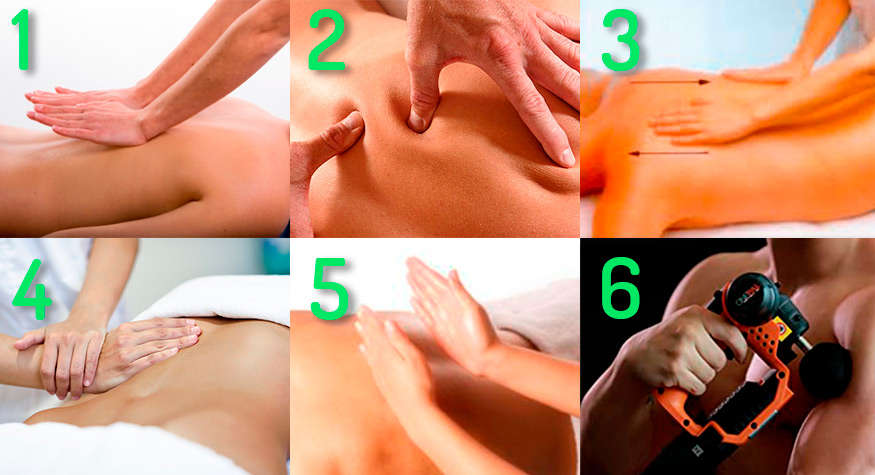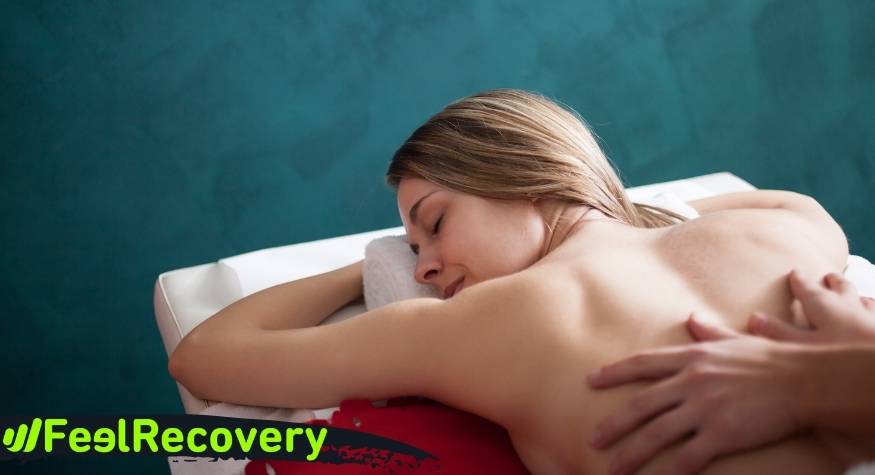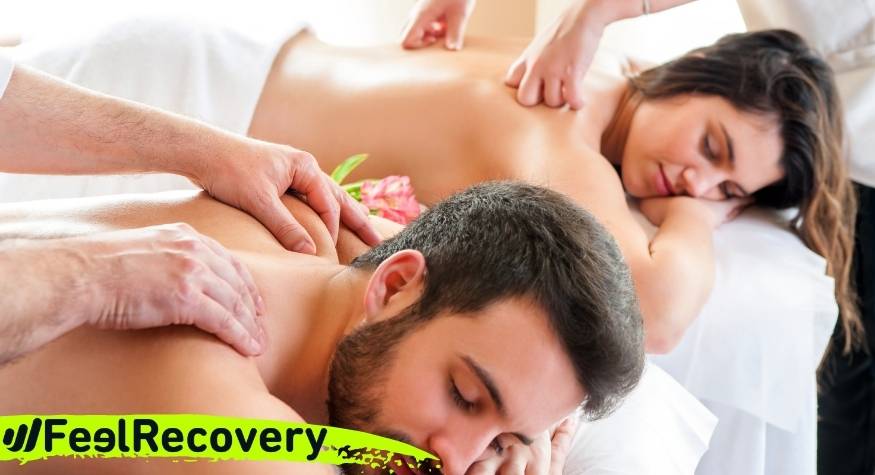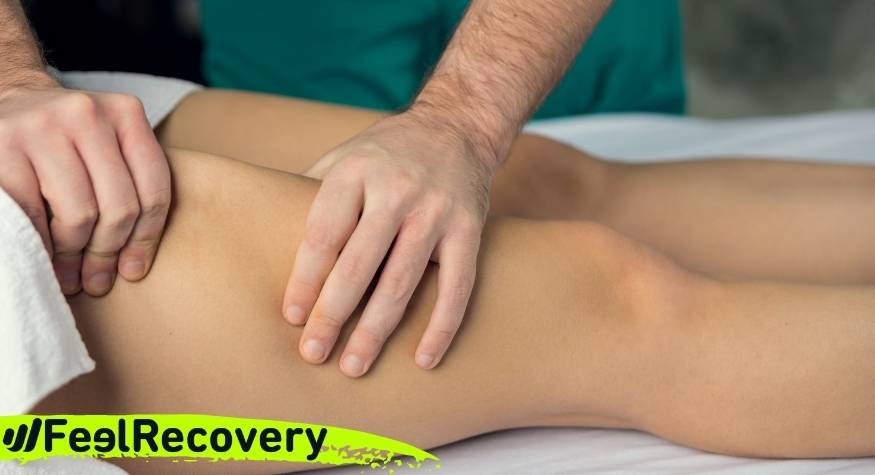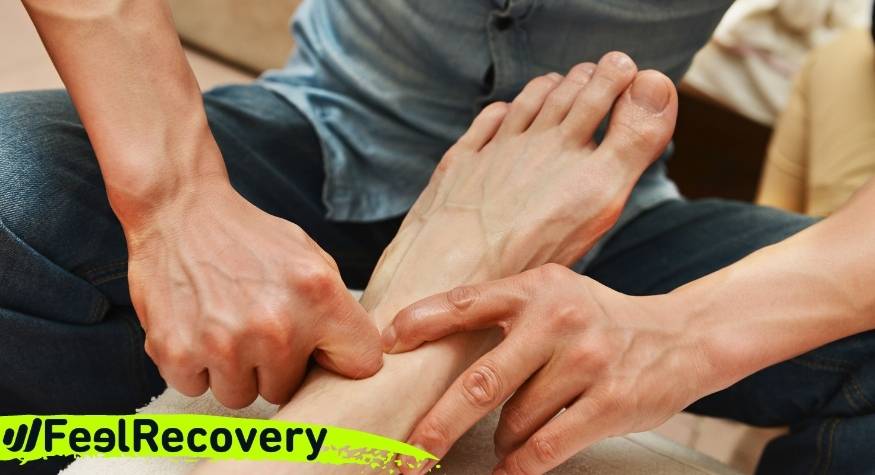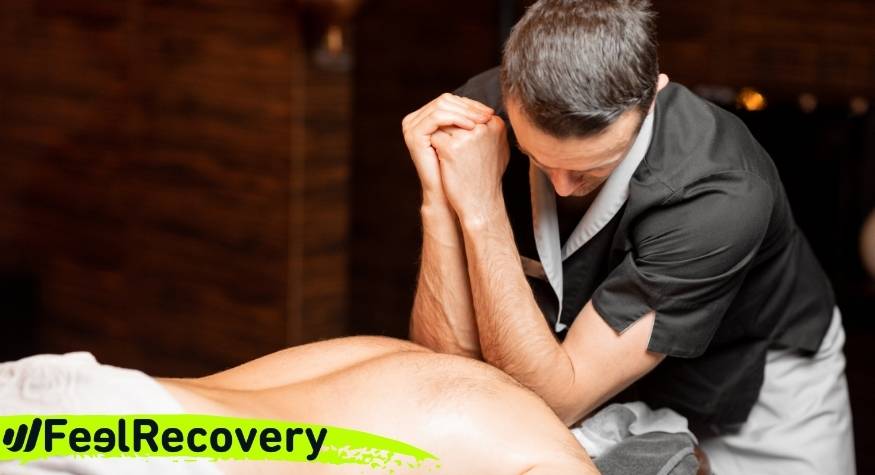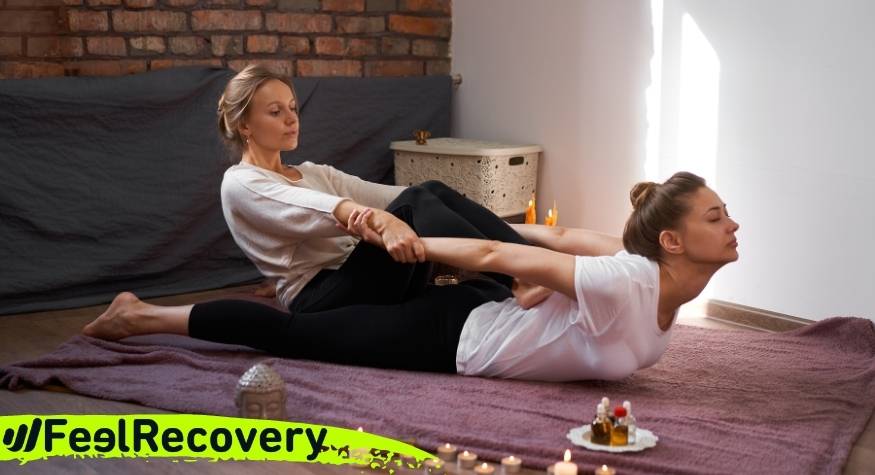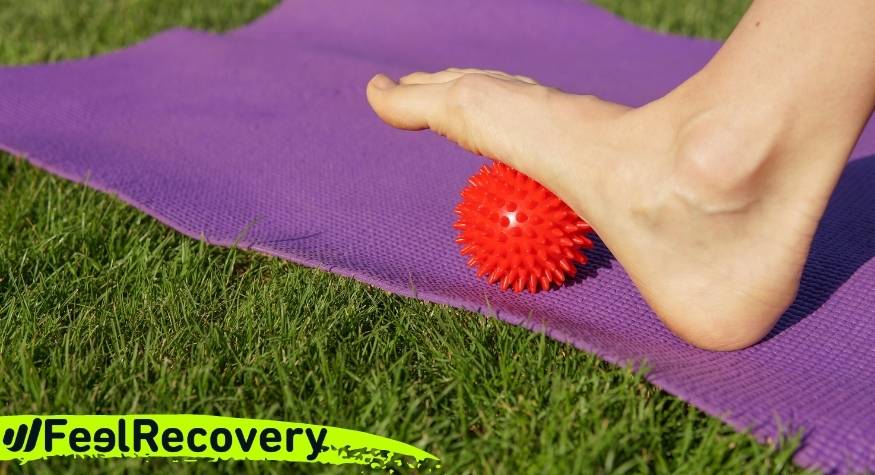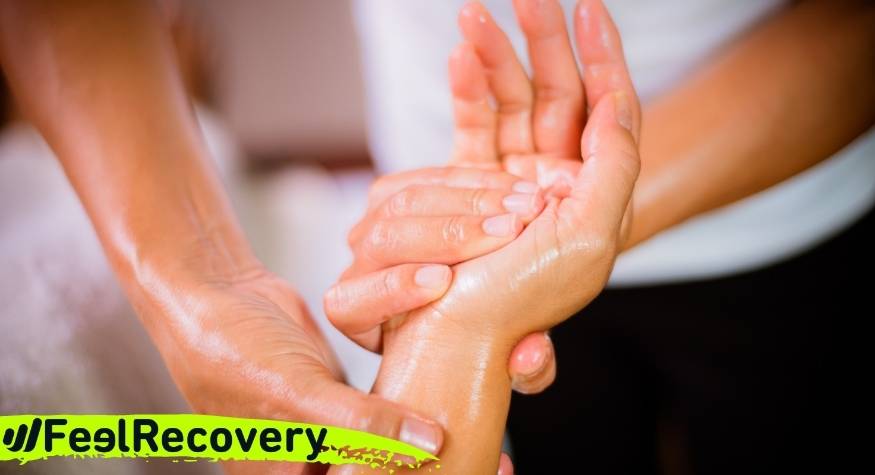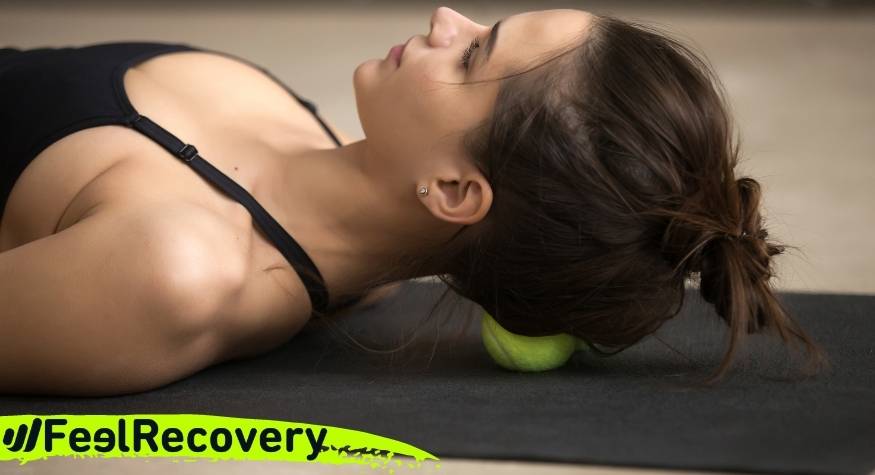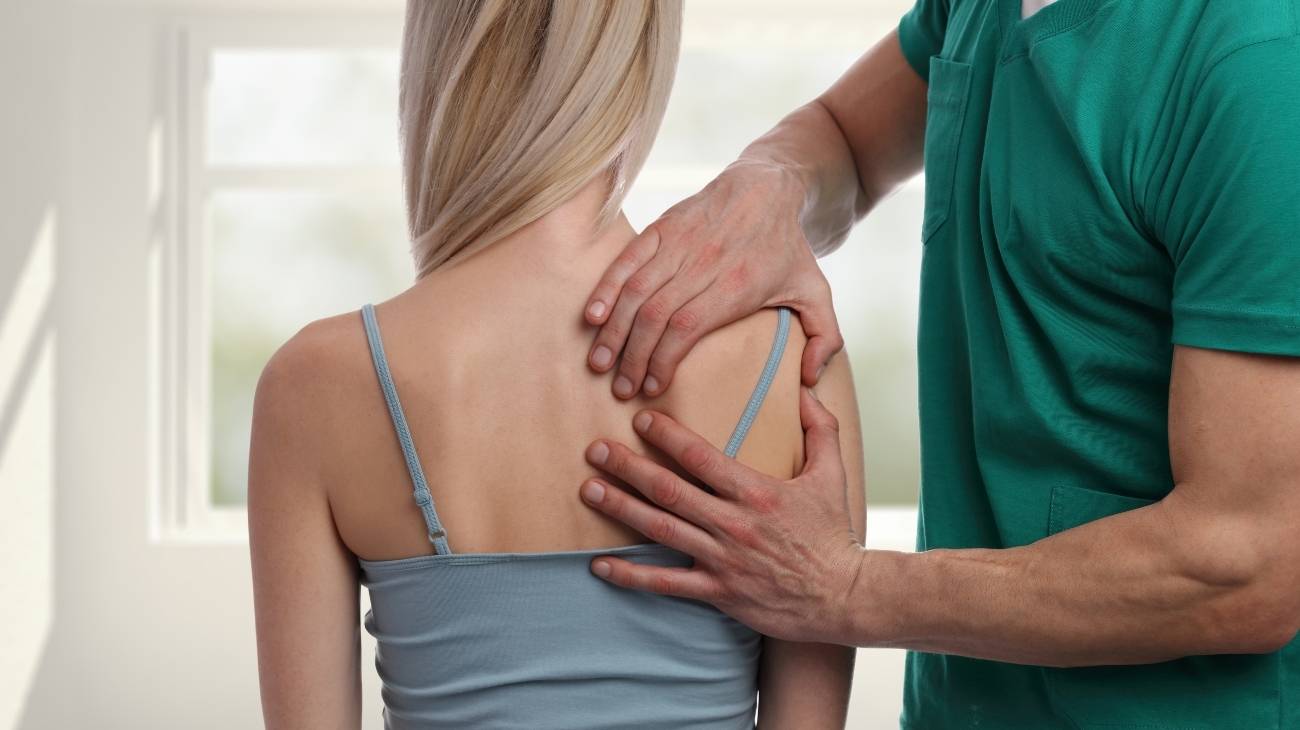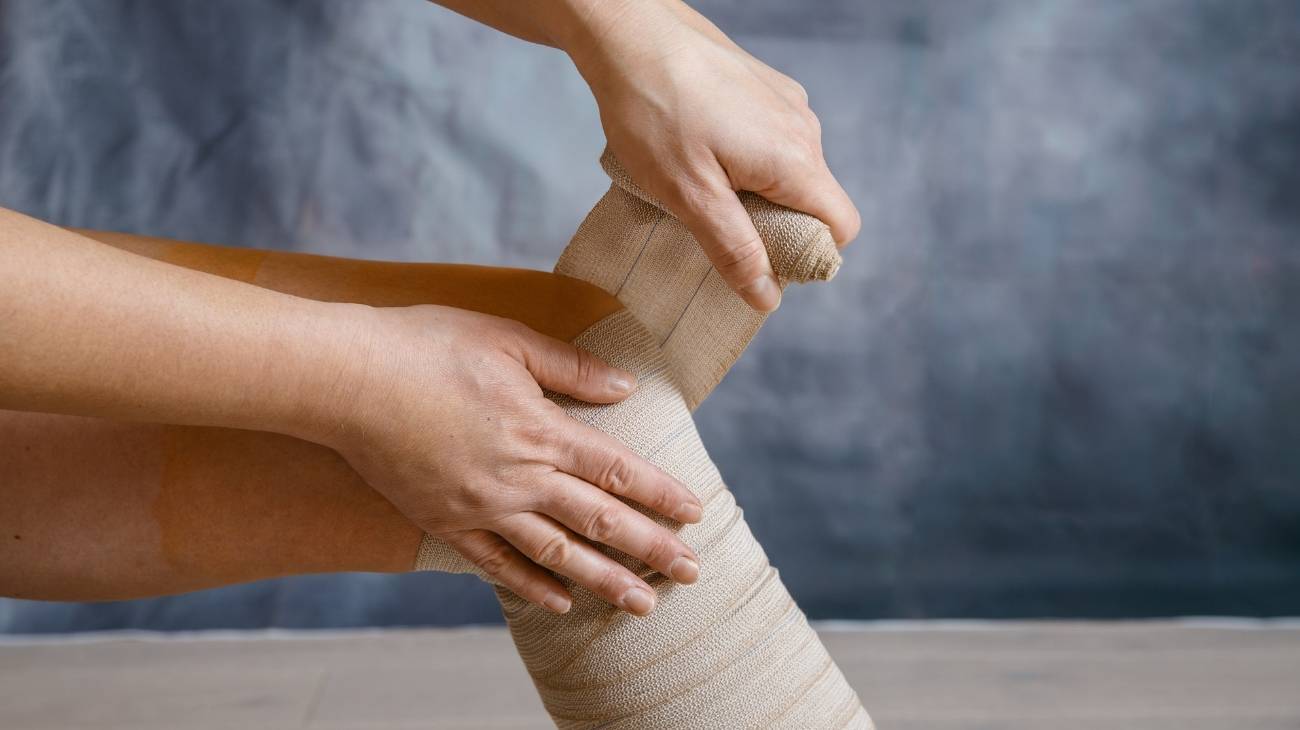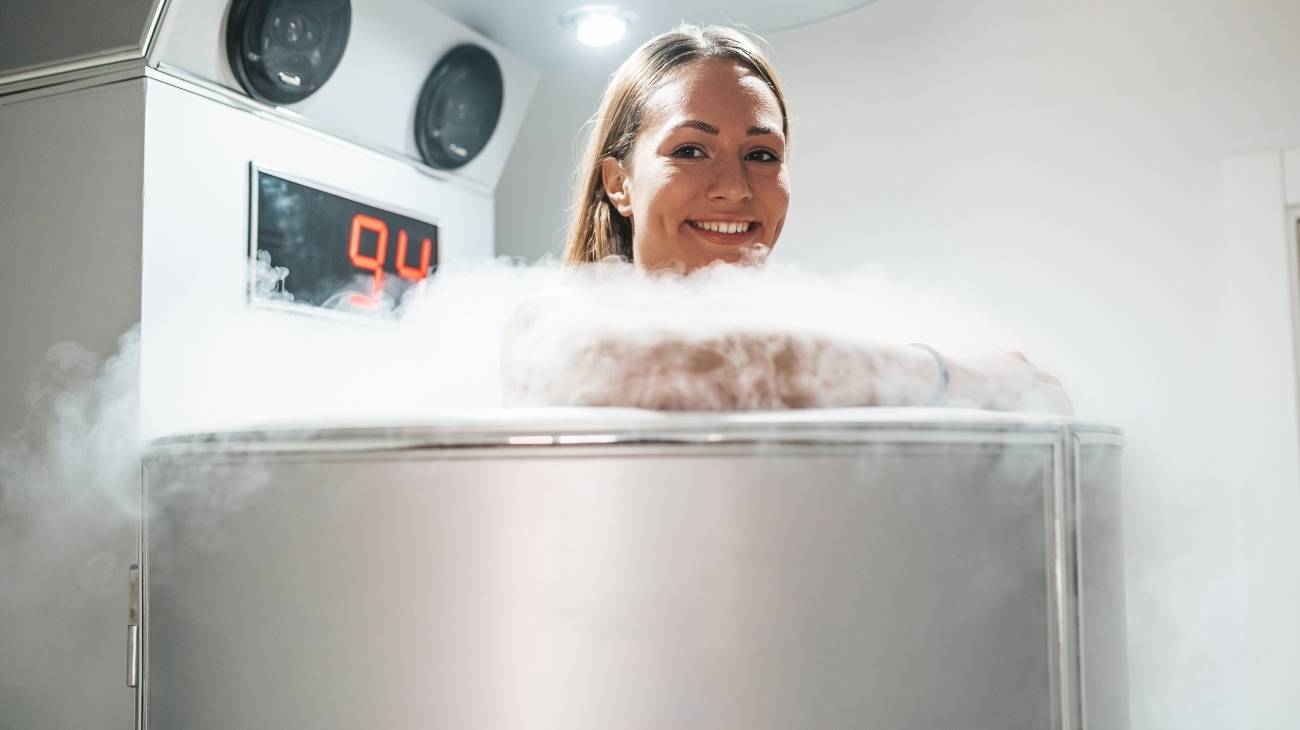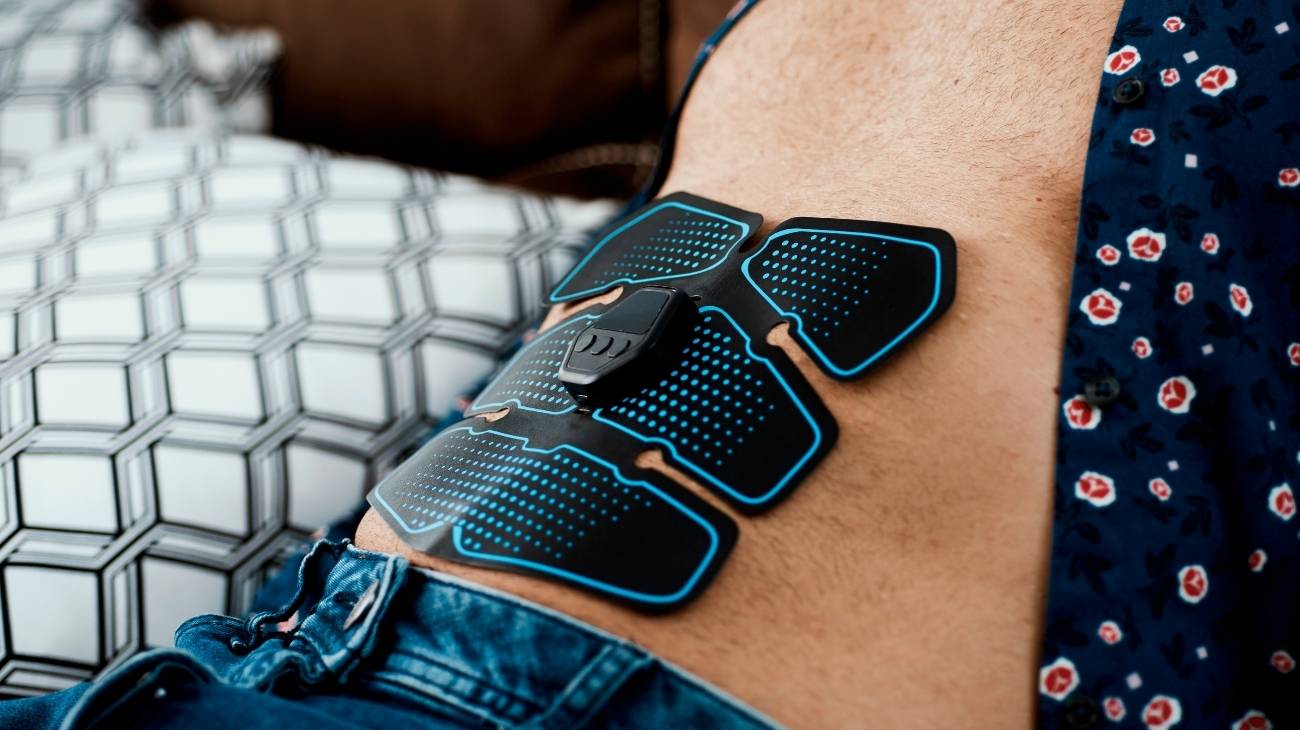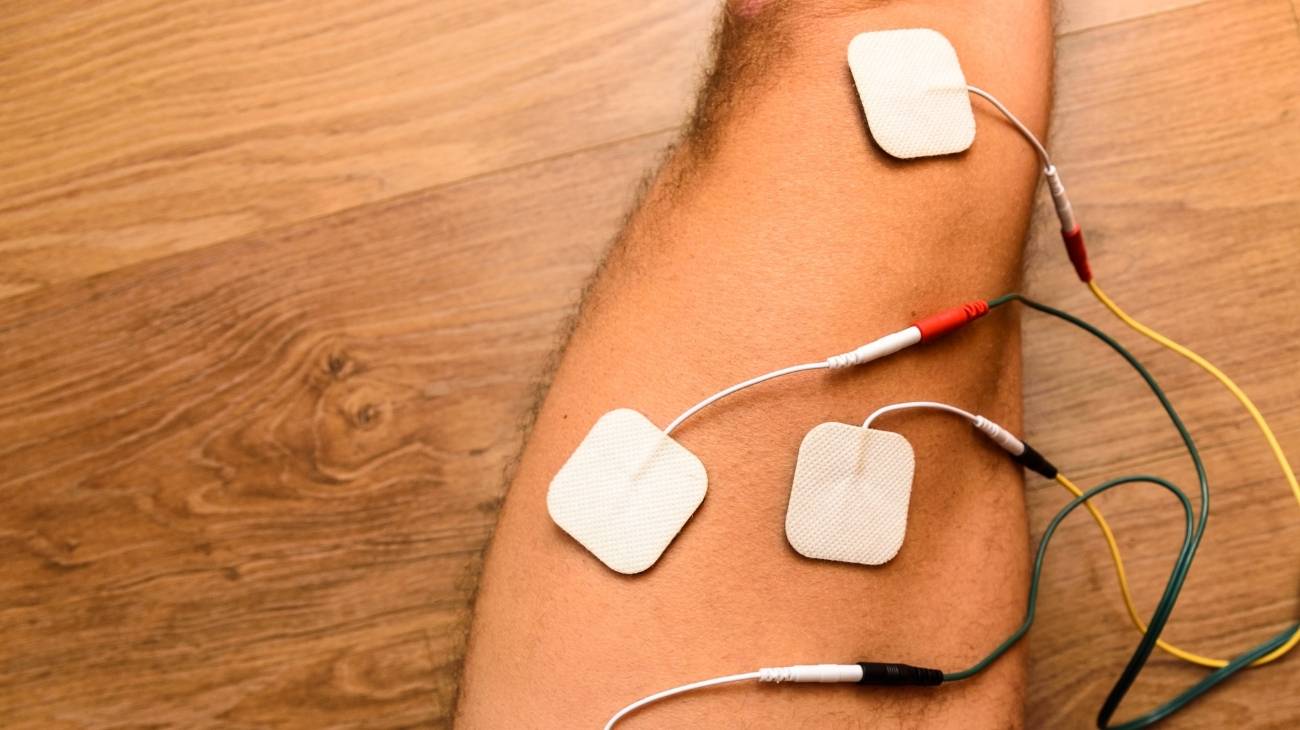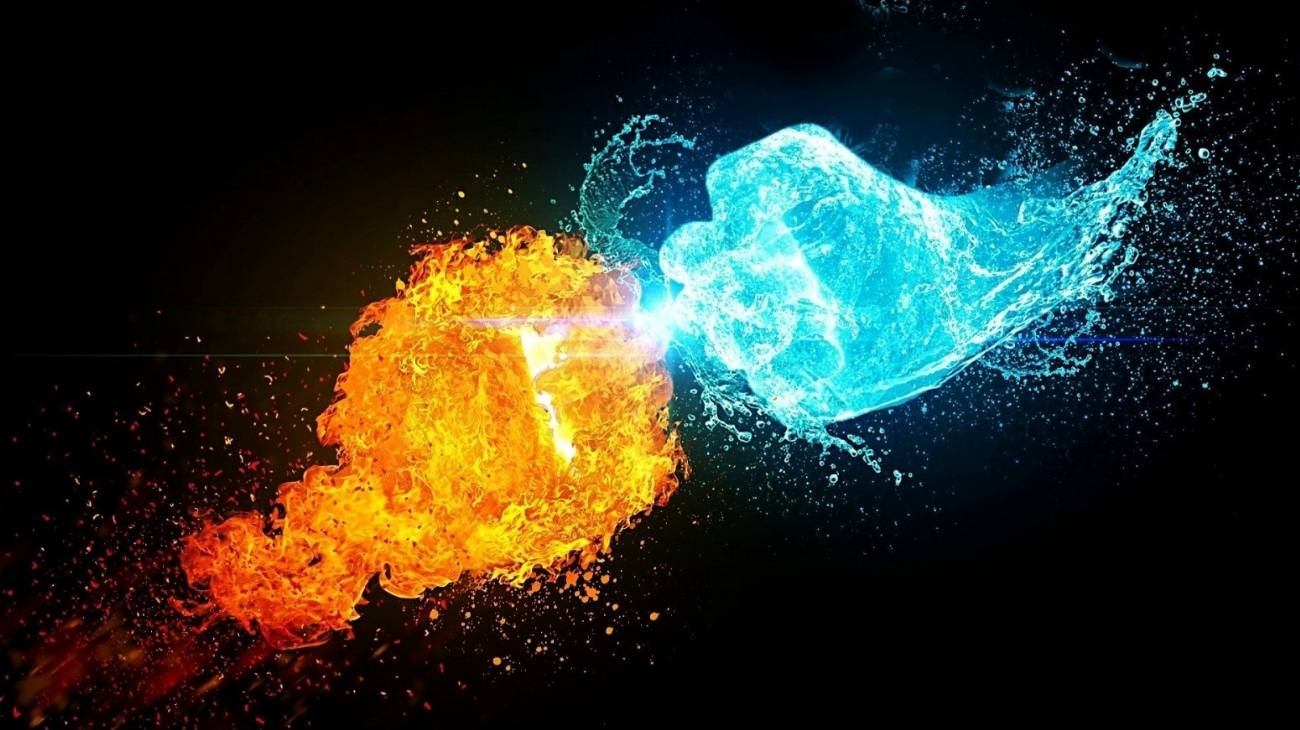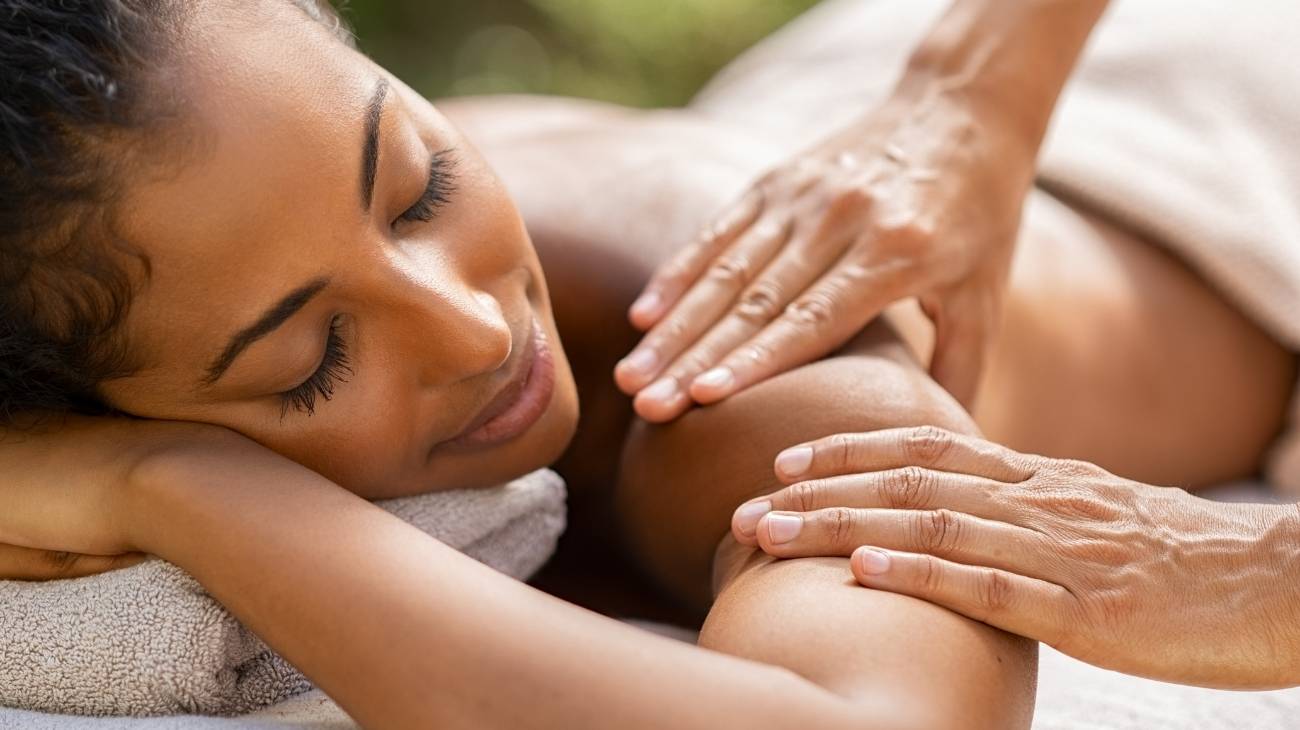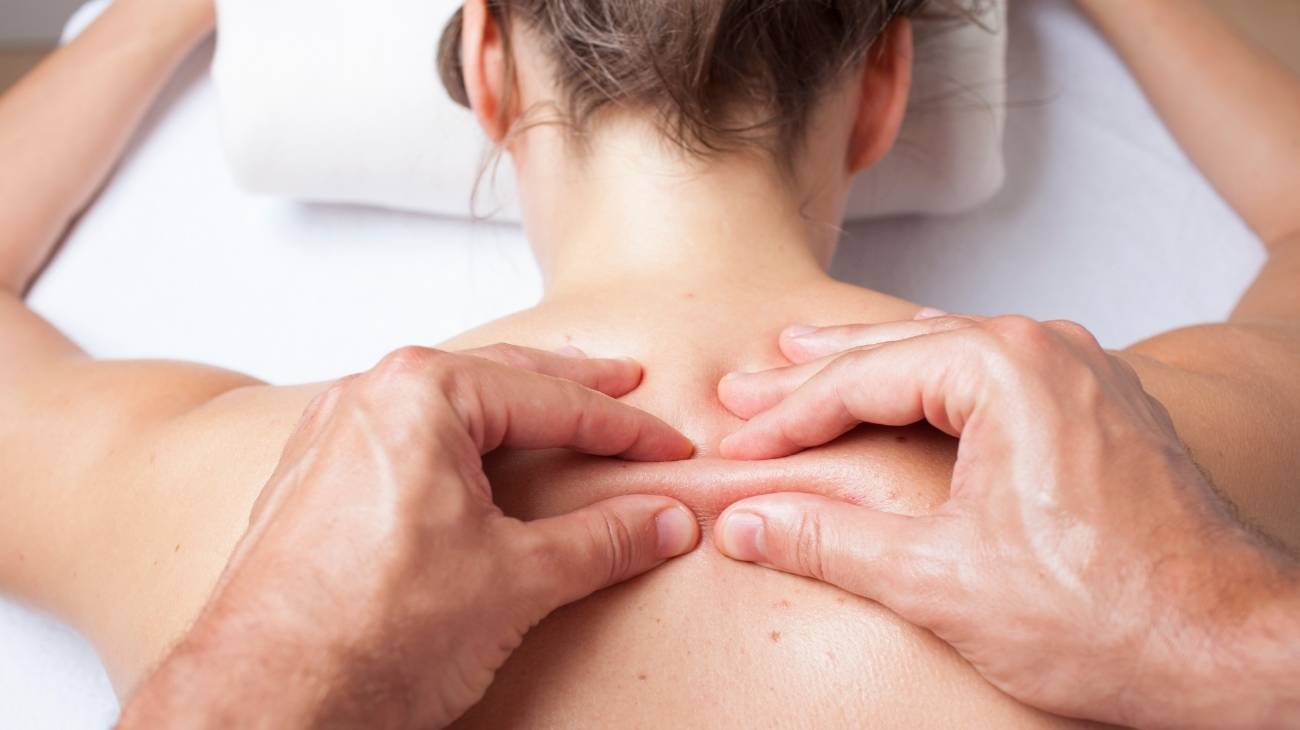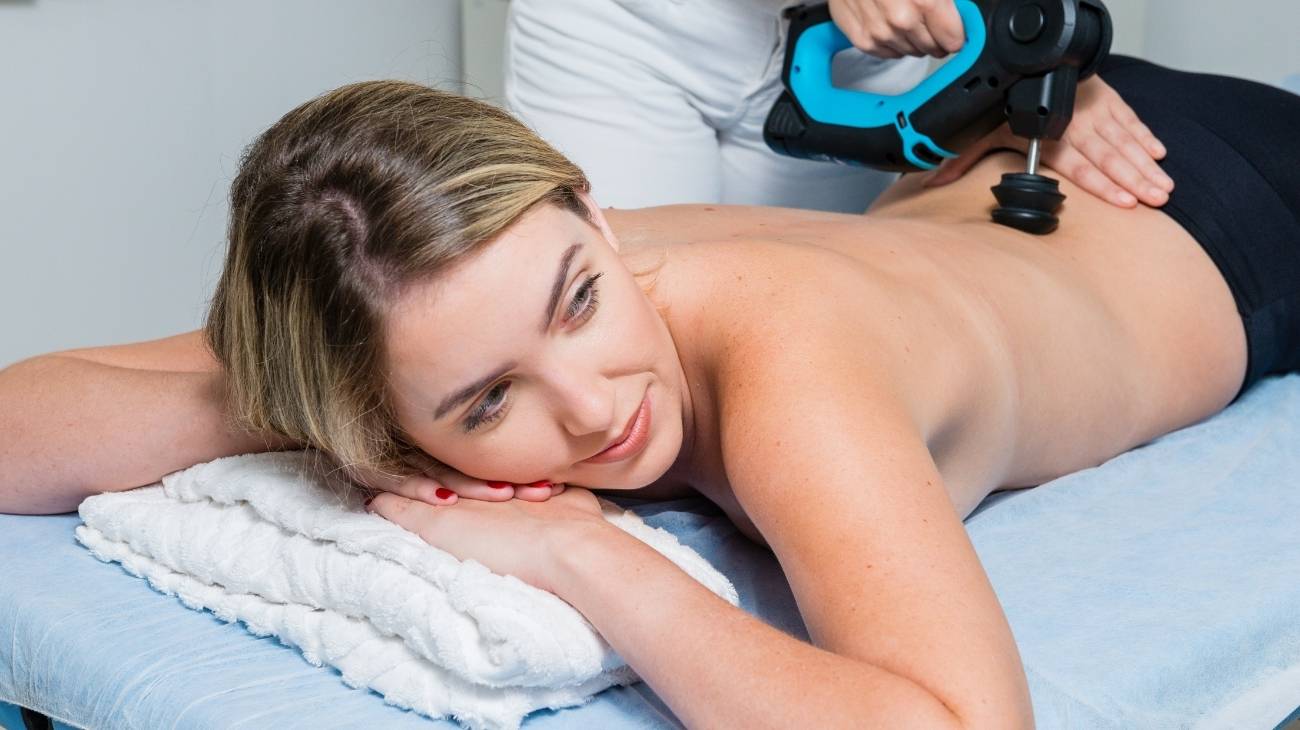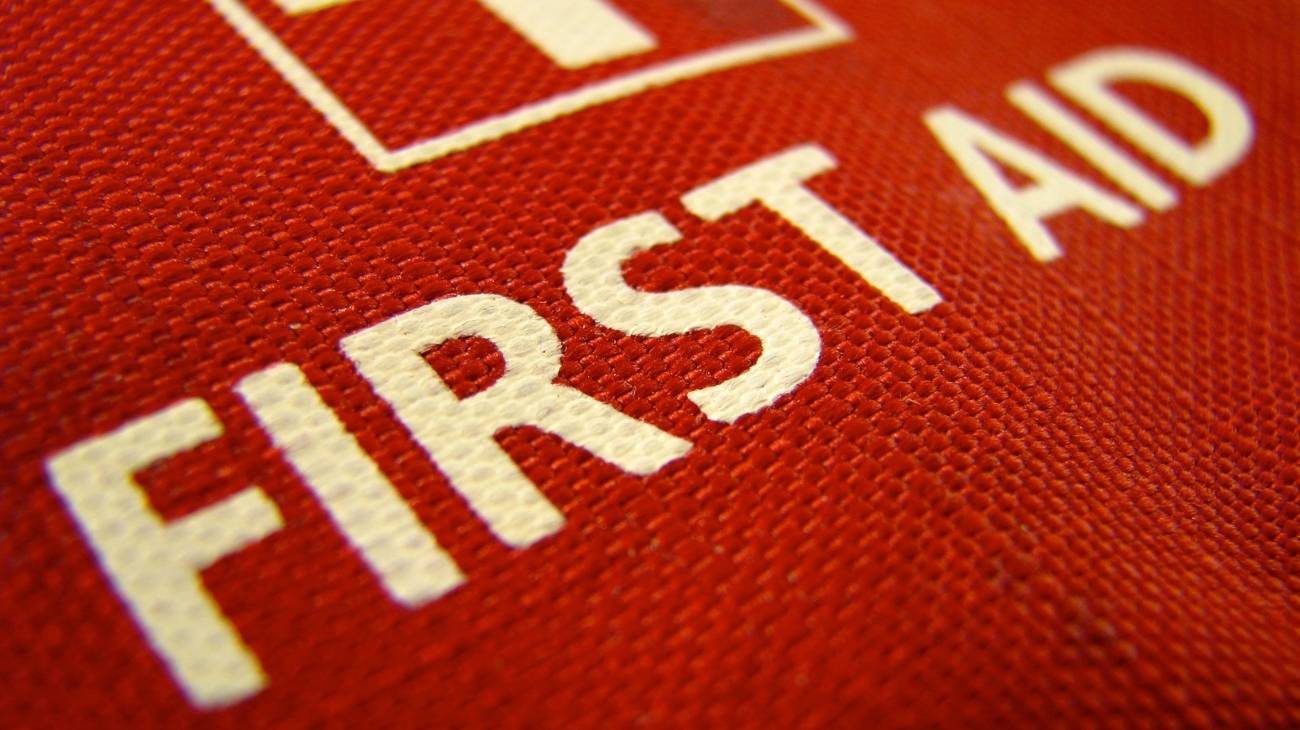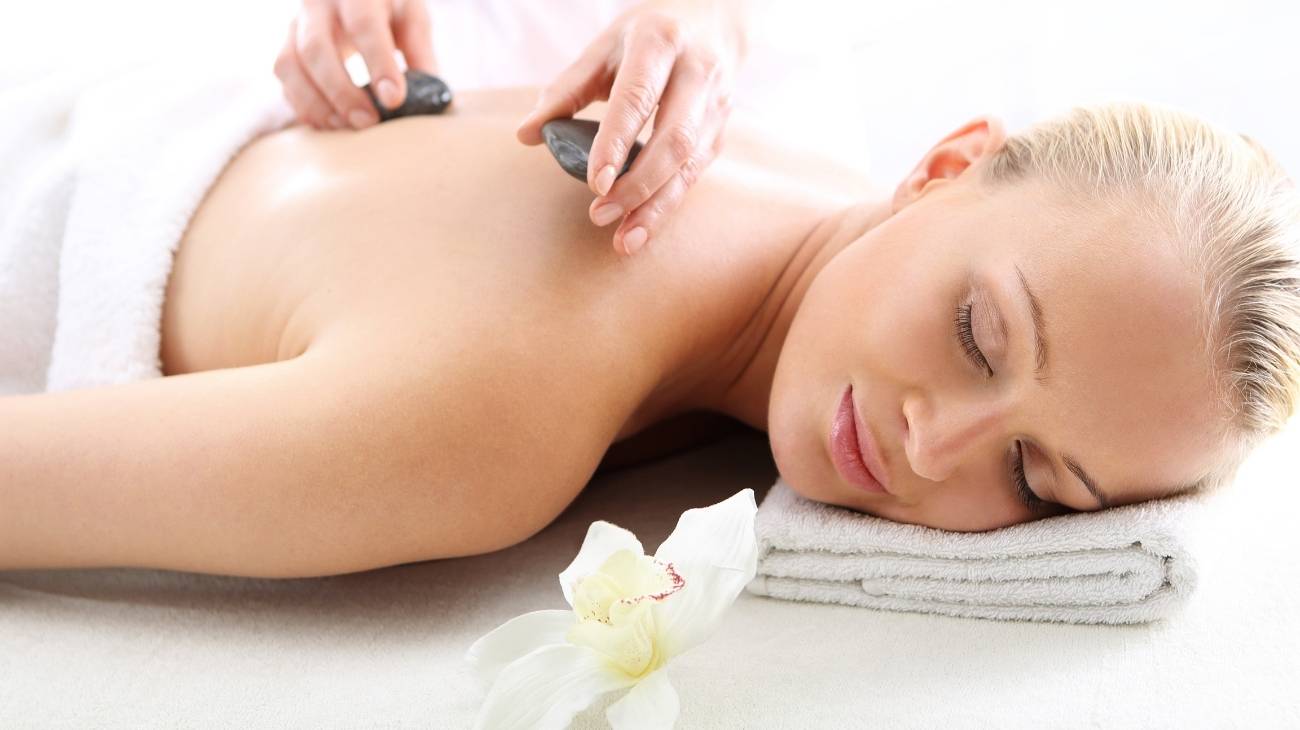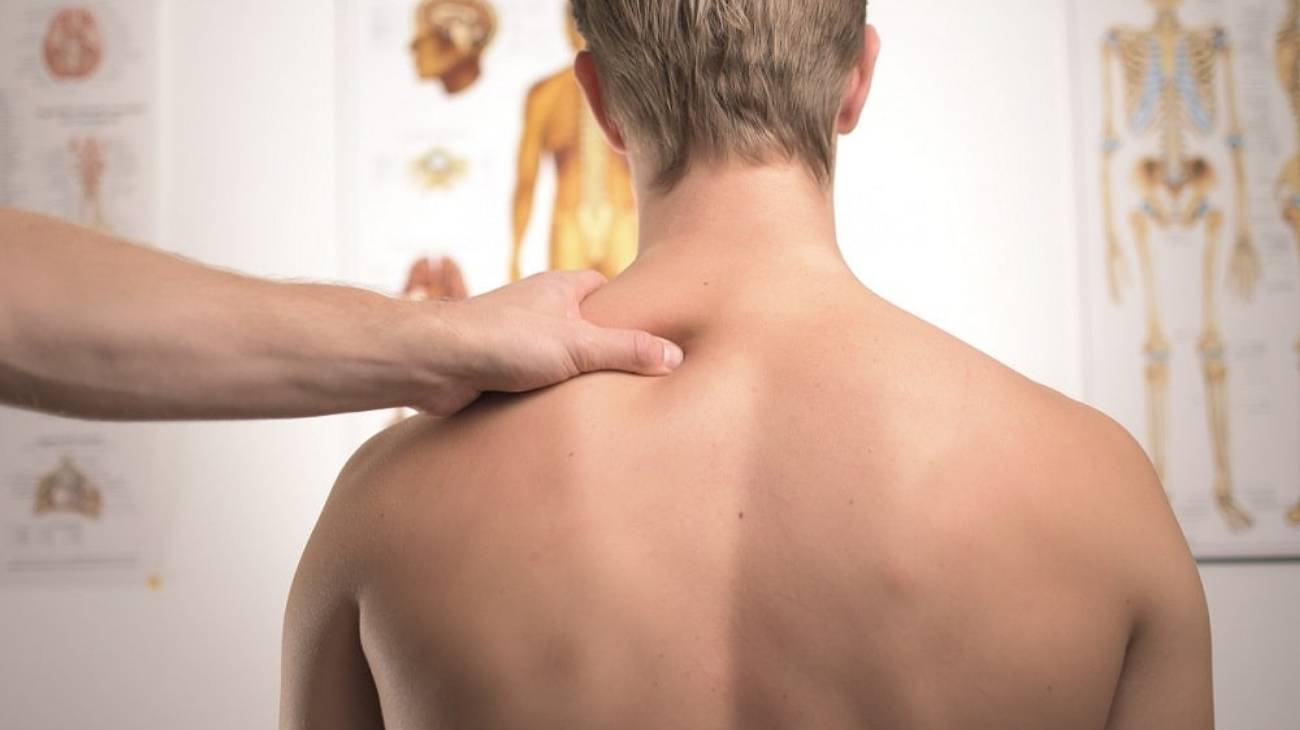- What is massage therapy and what is it for?
- What are the health benefits of therapeutic massage?
- What are the most effective types of therapeutic massage?
- What are the indications and contraindications of therapeutic massage?
- Why is it good to perform self-massages to improve health and recovery from injuries?
- F.A.Q: Frequently Asked Questions
You may wonder if massage therapy exists as such, that is, if it can be therapeutic to the other of treating any ailment, pathology, etc. In fact, this is the case, and there is even the concept of massage therapy, which refers to the manipulation of body tissues with the aim of reducing pain, stress and others.
But... do you know what a massage is and, more importantly, how it is done? What are the real benefits of massages? What types of massages are there? If you continue reading, you will discover all this and more about this pleasant practice which, we are already advancing, can have medical objectives, in addition to the pleasure that it is in itself to enjoy.
What is massage therapy and what is it for?
Massage therapy, or simply massage, is a treatment on the soft tissues of our body (muscles, connective tissues, skin...) to treat all types of pathology, irregularities or discomfort in these, in the bones, in the circulatory system, in the nervous system or even psychological alterations.
What is done is to rub them, knead them, tap them and touch them in a gentle but decisive manner and also with moderate pressure, always depending on the area, the patient and the objectives. The joints and, in general, the moving parts are also moved.
This is usually manual (fingertips, knuckles, back of the hands and even elbows), although sometimes various devices are used, both manual and mechanical, to exert more pressure or produce certain sensations. Likewise, it is usually practiced, in its most basic or simple way, on a horizontal stretcher, combining it with other practices such as the use of cold or heat to enhance the benefits.
Although we all know massage as a way of giving us pleasure, the truth is that we talk about massage as a form of therapy. That is, we apply it with the aim of really improving our body.
There are six basic actions that are given in a massage to treat the tissues completely. These are:
1) Sliding
It is an action to start the massage and often also to finish it, so that the patient relaxes little by little to return to his usual state. We see it in two ways.
- Superficial sliding: This is a simple, superficial contact, of rubbing or caressing. It is done slowly, seeking, moreover, uniformity. In this way the area is prepared for the following movements, which will be rougher. We can also choose to do it longitudinally or in circles. It regenerates the skin, reduces the excitability of the nervous branches and increases capillary circulation.
- Deep sliding: We can speak of a second degree of gliding in which the nearby tissues would be reached and a slight pressure would be applied, reaching fascias, muscles, etc. Here we begin to use rapid movements which serve as a warm-up. There is an increase in the circulation of blood and lymph and it has a decontracting power.
2) Kneading
It is a matter of energetically squeezing the soft tissues: you take them, slide the skin and lift the muscle, in a movement that imitates trying to detach them from the body, while moving them in the direction of the fibres in each area by grasping the tissues with your claw-shaped hand. With the latter, we also enable the movement of the internal liquid. The movements would be transversal or torsional. Like the previous one, there is also a superficial and a deep type.
- Superficial kneading: This eliminates debris, relaxes the muscle and nourishes it,
- Deep kneading: The muscles are also nourished and debris removed but, in addition, the muscle is helped to increase its capacity for contraction and the movement has a defibriating action.
3 ) Friction
Small circles or ellipses (in fact, whatever the internal tissue allows without forcing it) are drawn in the area, applying moderate pressure, with the fingertips, to mobilise both skin and muscle en bloc. It is indispensable in therapeutic joint massage.
With them we achieve:
- Mobilize the adherent tissues.
- them.
- Irrigate the tissues better.
- Relax.
- Reduce pain.
4) Compression
There is no displacement on the surface of the skin. What happens is that we compress the area (crush). Ideally, each compression should last between half a minute and a full minute.
5) Percussion
As indicated, we are talking about actions that stand out for their sound generated by blows. We found two:
- Axing: The external edge of the hands is used, in a successive way so that the contact with the area is not lost, which is brief. Constancy and energy are required.
- Striking: It is given with the palms of the hands, hollowed out. The movement is similar, of successive and rapid strikes, but usually less pressure is applied than in the hacking.
They have in common that they are fast and energetic. As effects of percussion in massages, we find:
- Nutrition of the muscle.
- Irrigation of the tissues.
- Development of muscle contractility.
- General stimulation.
- Normalisation of the tone.
- Restoration of the excitability of the nervous system
6) Vibration
Static contractions are performed with the forearms so that the skin moves slightly, oscillating and without losing contact between the skin and the hands. It is a short, fast, energetic and rhythmic action. It is a shaking principle, with which it usually alternates. The vibrations in the massages are used to achieve this:
- Reduce nervous excitability in cases where it is high.
- Relax the muscles.
- Help to improve muscle contractility.
- Stimulate circulation.
- Make possible secretions come off.
Bestseller
What are the health benefits of therapeutic massage?
What is really positive about this therapy is that it is beneficial on many levels. We work from the most basic or typical to circumstances that we might not think of trying to improve with this technique.
- The muscles are warmed up, so that the pain is reduced, and actions can be carried out...
- It stimulates and develops the muscles. In this way, it reduces fatigue and even increases performance.
It has a direct mechanical action on the tissues. - These also become more flexible.
- The adhesion between equal and different tissues and tissues and other elements is improved.
- The muscles are stretched and thus relaxed.
- It acts on the nervous system in a reflex manner, so that other areas are reached, pain is relieved, etc. This can be both calming and stimulating.
- It makes the blood circulation better, flowing faster and cleaning the system of waste. It also lowers the blood pressure.
- It helps the psychological well-being.
What are the most effective types of therapeutic massage?
Considering its practicality as a therapeutic resource and knowing the different ways in which massages help us by working the different parts of the body, it is logical to think that there are several types. Thus, we can always choose among the different options the one that is most suitable for your needs.
Swedish massage
It is the massage par excellence in the West, the one we all know and the one most often practiced, both to relax and to treat many ailments. It is particularly suitable for relaxing tension and muscle contracture although it also reduces joint pain, helps improve circulation and works very well to relieve the physical effects of stress.
It is performed covering large areas, including whole muscles and even muscle groups. They are vigorous and fluid and include deep rubbing, tapping, kneading and friction. A lotion, almost always oil, is usually applied in order to manage the tissues smoothly.
Relaxing massage
It is a practice very similar to the Swedish massage with the exception that it is softer, seeking the relaxation of the patient. For example, we find that this:
- It has a greater amount of sliding movements. Even so, the rest of the actions or movements are applied (friction, axing, vibration, compression...).
- It is performed more slowly.
- The pressure is softer.
- Not so much emphasis is given.
The effects are not as evident as when we go deeper into the tissues. However, with a relaxing massage, the muscles are also relaxed in a direct way, by contact, and with this, pain is reduced, mobility is increased without pain or discomfort.
The relaxation produced by the session makes all the tissues relax also in an indirect way, normalizing their state, etc. In addition, the lymphatic system is stimulated and the blood circulation increases while the blood pressure decreases, as does the heart rate.
The room is usually set by lowering the light, including sounds of nature or soft music, some scent is dispersed and lotions are applied so that the gliding, which is the main protagonist, is simple and does not jerk.
Here we would include services of many types, such as:
- Hot stone massage (thermotherapy) or cold massage (cryotherapy)
- The Thai pseudo-massage, which is a relaxing version of this (we will see it later)
- Self-massage
- Foot reflexology (even if considered curative)
- Many others in which, in short, relaxation is sought.
Generally, it is the type of massage that is carried out in a first therapy session when you suffer from illnesses or injuries. In this way, the body gets used to the movement of the tissues. Later, in the following sessions, the most suitable massage is given directly or a combination of a relaxing massage with another one is given to cure the pathology. Obviously, this is the one we will choose, too, if we just want to enjoy a little bit of relaxation and let our body relax and feel at ease.
Cyriax massage or transverse deep tissue massage
This is a deep massage technique that greatly improves general injuries, whether muscular, tendon or ligament (sprains and sequelae, capsulitis, fasciitis, adhesions, chronic contractures, fibromyositis, tendonitis, tenosynovitis, etc.). Obviously, acute inflammation should no longer exist. Its objective is total improvement, seeking normal movement of the area in the short term.
As well as improving and maintaining mobility, it has other advantages such as the fact that with this technique no adhesions will form with the injured fibres, causing hyperemia, which eliminates dead cells and stimulates the creation of elastin and collagen and their own reorganisation, accelerating healing.
It is important to highlight that it is a painful massage because it is worked directly on the exact area where the injury has occurred. It consists of a short and precise mobilization of the tissue surrounding the lesion and that of the lesion itself. We must reach the subcutaneous connective tissue.
For this reason, it is not indicated in situations such as fractures, skin infections, dislocations, nerve compression, calcifications, fibrillary ruptures, etc.
Steps to carry out this type of massage should be taken into account:
- We achieve this with transversal movements. We use the octopus of the index fingers and, on these, we rest the middle fingers and cause friction in a perpendicular direction to the affected fibres. Note that the area must be stretched.
- This massage will last between 3 and 4 minutes for acute cases. You can repeat it after 2 or 3 days. If we are talking about a chronic problem, the session will be extended so that the friction is 10 minutes from now, and can be up to 20 minutes if necessary. In addition, you can return to the surgery earlier, with only 1 or 2 days' rest required.
- Both intensity and speed will be determined according to the injury. Similarly, the depth to which we can sink our fingers will depend on the area affected.
- In this case, no lotions of any kind should be used. In fact, they are counterproductive, as they help us to slide down the skin and this is exactly what we should avoid.
Lymphatic drainage
Drainage sessions are used to dispose of excess and liquid metabolic waste through the lymphatic pathways. We must get your vessels and nodes to contract so that the lipids and other toxic waste pass into the bloodstream to finally evacuate them.
This is indicated in cases of flu, constipation, gas (when it already occurs in the intestines), headaches, lymphedema, inflammation, oedema, post-surgery therapies... Of course, in the case of lesions, this massage would be a complement. It may be the case that a major sprain or a joint blow generates liquids. In this case, we would drain and also treat the injury with the corresponding massage according to its characteristics.
When doing this type of massage we will take into account:
- Lymphatic drainage is as different in each session as the pathology suffered. What is remarkable about this therapy is that it is meticulous. Although each drainage will be different, in common they have a basic modus operandi.
- This consists of applying gentle pressure, in the form of a caress, slowly, to the lymph and maintaining a constant rhythm. The hand must be open.
- The basic movements, which are combined with sense, are circles with the four flat fingers as well as with the thumb exclusively, pumping with the palm and also digital and spiral movements.
- It is necessary to define the approach to be given to the manual session, there being a technique of reabsorption, with which we will increase the pressure on the tissues, and another of evacuation or impulse.
- It is interesting to note that having a lymphatic drainage improves our immune system, as thanks to the stimulation of the lymph nodes we produce a greater number of white blood cells.
Reflex massage
It treats a condition by stimulating surrounding areas, which, through the nervous system, can have an effect on the affected area. Reflex massage is based on the concept of a reflex arc. The stimulation of an area involves acting on the elements of the organism that are associated with it. An area is excited through the vegetative and cerebrospinal systems until the internal environment is modified.
We can work on situations as diverse as:
- Torticollis.
- Edemas.
- Rachialgias.
- Respiratory or gynaecological conditions.
- Rheumatism (on some occasions).
- Traumatological or orthopaedic joint stiffness.
- Distention.
- Tendonitis.
- Various neurological disorders.
With it, we obtain benefits such as:
- Increase of the irrigation.
- Nutrition of the cells.
- Pain relief.
- Lowering of both general and local tissue tension.
- Functional recovery.
Due to its logical discomfort in terms of pressure, it is not indicated in some specific cases such as menstruation, acute infection, tuberculosis or the presence of malignant tumours.
Considerations to be taken into account in this massage:
- Firstly, it is essential to detect the affected area, precisely to avoid it. We will do it in a tactile way, looking for tense tissue, resistant to movement and with which pain is produced if you have contact or you move.
- Once this is done, we will start working on the associated areas (known as reflex points) to stimulate them. The aim is to act on the area where you have the condition from nerve impulses that we make come with stretching the tissue.
- You must act on the reflex point of the affected area, stretching the skin first to do the same later with the subcutaneous tissue. This will be done with the middle and ring fingers, which will go through the corresponding section in a constant and slow movement.
Deep tissue massage
As its name says, this manipulation seeks to work down to the lower layers of the tissues, starting, of course, with the upper ones. It is very useful to eliminate the muscular knots or adhesions and loosen the tension. Of course, it is also indispensable when we suffer from muscular-skeletal problems of various kinds as well as when we have sports injuries, especially in high-impact sports.
When performing this massage these are the important points:
- Seen from the outside, we cannot deny that it is similar to the Swedish massage or common massage.
- The difference is that the deep tissue massage requires intense pressure capable of penetrating to the fascia. Otherwise, we see that slides, friction, kneading etc. are made.
- It is, of course, more uncomfortable and somewhat painful (if you suffer from arthritis).
- It also requires over-hydration after treatment to balance the lactic acid. If this is not the case, we may feel uncomfortable in the days that follow.
- Due to the type of results sought and the pressure to which the patient is subjected, the sessions should be spaced out over several days.
- In addition, they should be accompanied, in most cases, by a programme of exercises and/or relaxation techniques.
Thai massage
Thai massage combines conventional massage with diverse, changing postures in the same session. It seeks to harmonise our body, to get the energy flowing and to balance our functions.
Thai massage must be taken into account that:
As with other types of massage, Thai massage differs according to the region of the country where you demand it. Of course, if you want to enjoy it in our country, you should get informed with each professional, because each one will work with one or more techniques. What is important is that you always use the right type of Thai massage for your problem, something that, of course, is known in consultation.
There are techniques that give priority to flexibility and stretching. Others, more similar to massage, seek the healing of joints and muscles through pressure. You will also find a mixed type, others with the use of external elements such as elastic bands, massagers, hot objects...
Physically, we find a pressure massage that seeks to work on the air channels. There are also circulatory compressions, reflex stimulation and joint mobilisation. The stretches seek to stimulate the "Sen", the pathway that branches through our body and which contains that air or "Lom".
The masseur rests part of his body on the patient to apply the appropriate pressures. Sometimes he can even use other parts of his body to maintain the position. There will also be occasions when he massages with his feet or even walks on the patient.
In general, you will work on the floor, keeping yourself completely dressed in comfortable clothes that allow you to move (remember that manipulation is combined with a change in posture).
The session is long, as the whole body is worked on, from point to point, both in the stretching and in the pressure phase. Although it may seem a little chaotic, the truth is that Thai massage has a standard pre-set rhythm that makes the body recover its balance and maintain it.
Myofascial release
It is a technique specifically designed to treat pain, in this case, working on the fascia, which is the set of connecting tissues between the muscles, nerves and blood vessels. Maintenance sessions can also be done if you have conditions that favour the myofascial system being affected frequently. This makes it possible first of all to make movements possible and then to improve mobility. Another interesting effect is the improvement of fluid circulation.
A variant of this is rolfing, which is part of the structural integration philosophy. In addition to manipulating the fascia, the practitioner makes the patient move his body in different positions. Pain is relieved, but there is also a range of movement, posture is improved and there is general relaxation (even on a mental level).
How is this type of massage performed?
- What is done is to stretch and release the connective tissues based on bearings in the area of the body, which will go from top to bottom and will seek to eliminate the trigger points.
- The most common parts are the back and legs, although it can be done, if considered appropriate, in the rest of the body.
- First the fascia is palpated and the affected area is heated. To do this it is only necessary for the professional to use his fingers, palms or elbows to make long movements.
- Some gentle stretching will also be necessary, which will end up by holding it until the desired portion of the fascia is released.
- The work is done slowly, looking for a "natural" and controlled release.
- It is purely manual, no machines, massage devices or oils or other types of lotions should be used.
- As part of the operation, the patient must drink a lot of water and, if necessary, begin to re-educate the posture and do stretching to avoid relapses or the problem becoming recurrent, which weakens the tissue.
- The number of sessions is very variable, but the reduction in tension is clearly noticeable from the first intervention. To continue or not and for how long will depend on your condition as well as if you are doing more treatment.
Digital Therapy
This is a massage technique that uses only the fingers to apply pressure to specific points. With such a broad definition, we naturally find many types of massage. In this group we would include:
- Acupressure, similar to acupuncture but without needles.
- Shiatsu, which is the Japanese massage, very similar to the previous one, with the same base, but with details that differentiate it from this one, such as the rhythm, which is faster, the use of only the thumb and palms or the way in which the pressure is applied.
- Foot reflexology, which is the pressure on the soles and toes).
- Other practices in which, in short, work is done on small concentric points, pressing them, to bring well-being to both these same areas (trigger points) and the areas with which they are related (meridians).
Trigger point massage
A trigger point is a specific area where there is a tendency to form muscular knots and it is on these knots that this massage is worked. It is a resource designed to mitigate pain in specific areas. We also achieve a softening of the muscles, which also become longer and stronger with the sessions. The logical effect is that a greater range of movement is given without effort.
Thus, it is clearly a therapy indicated in very particular cases where knots form in the muscle tissue, for example when we make a bad movement, we do not stretch properly before doing sport, etc.
What to take into account in the treatment of trigger points?
- The basis of trigger point massage is ischemic compression. This should always be gentle and painless, although it is necessary to maintain constant pressure and as deep as possible without it being counterproductive.
- With a numerical rating, from 1 to 10, the discomfort should be commented on at each moment. The professional will gradually balance the pressure until it reaches 5 or 6.
- Afterwards, he or she will maintain it until the patient, getting used to it, considers that the discomfort is less.
- The pressure will be maintained until it reaches 2, i.e. almost no discomfort. Apply pressure again, maintain it and wait for it to decrease. The level 2 maintained implies that the trigger point has been deactivated, which is the objective of this type of massage.
- It is important to know that pressure cannot be maintained indefinitely. It is clear that if no discomfort or results are achieved, we must change the point. We must let a minute go by and, if the pressure is not responded to, it will be questioned whether that is a trigger point.
- Sometimes injections are included. In this case, it is obligatory that the massage is given in a medical or chiropractic centre.
Ayurvedic massage
It is based on the traditional medicine of the East (mainly China and India), which treats ailments in a very different way than in the West. It is one of the resources used, together with others (yoga, food, herbs and meditation), to heal the body or, indeed, to prevent it from becoming ill; it is part of a whole.
Another massage based on traditional medicine is the Lomi Lomi massage, a Hawaiian practice that also includes prayer, meditation, diet and more unscientific healing techniques. The same is true of Anma, which is done by seeking the normal activity of an internal flow of energy that is what makes us healthy.
How to do Ayurvedic massage?
It has a strong base in the relaxation of the whole organism, from the dermis to the most internal point. This is achieved through manual actions on the whole surface of the body, not only on the painful area or the surroundings.
These will be both energetic, fast and of greater pressure as well as slow, soft and thought to give a whim to the skin and relax us. In this way, we get different stimuli and achieve a complete work with a double approach: stimulation and relaxation.
It is very important, especially when this is given as part of a medicinal Ayurveda programme, to use aromatic oils. Each of them is designed to treat particular situations, that is, each essence has particular properties both at a healing level and to work on spirituality.
What are the indications and contraindications of therapeutic massage?
Like any therapy, massage therapy has both indications and some contraindications. Of course, the benefits outweigh the possible disadvantages but it is absolutely necessary to know both. In this way, we will get a solid opinion on whether going for a massage is the most appropriate solution, whether we should try something else or whether it is a therapy that should be used as a complement to another.
Indications
- Traumatic pathologies.
- Neurological diseases. From insomnia to paralysis and others such as spasms, exhaustion, stress, fibromyalgia, headache...)
- Circulatory pathologies.
- Scars.
- Contractures.
- Alteration of the shape, support or place of the muscles or tendons due to bad posture or overexertion.
- Tissue tension.
- Rheumatism in all its types and phases (except acute.
- In general, pain in bones or tissues, including joints, tendons, etc.
- Stimulation in circumstances typical of babies born prematurely.
Contraindications
- Almost any acute illness, especially those related to
- Muscle-skeletal apparatus or with the skin.
- Acute inflammatory processes.
- Acute moments of circumstances such as contusions, sprains, joint effusions, trauma, etc. even when the inflammation is not acute.
- Open or semi-closed wounds.
- Infected skin (typhus, ringworm...).
- Vascular fragility.
- Phlebitis or inflammation of the venous tubes (superficial or deep).
- Metastatic cancer.
Why is it good to perform self-massages to improve health and recovery from injuries?
Although you usually go to a professional for a massage, whether it is cosmetic or health-related, the truth is that we can also enjoy several of the benefits that this practice brings by doing it ourselves.
Obviously, we cannot do the same work on our body as a third party, but we can achieve certain milestones that help the therapy in different ways:
- Firstly, knowing that with it, we maintain the benefits of the sessions we have received from the therapist.
- Massages, like stretching, are necessary for our body to be in perfect function, they are maintenance even if we have no problems. If we do not do them, we are more prone to injury, fatigue, etc. This means having more problems and going to a professional more often when we could certainly avoid it.
- Simple practices, well done, mean that we can treat ourselves (in minor problems, of course). Not all massages require enormous knowledge; many are easy and we can practice them without the need to go to a doctor's office so often.
- You help yourself, you dedicate time and, in general, attention. This way you get in touch with yourself, listening to you, feeling you.
F.A.Q: Frequently Asked Questions
References
- Field, T. M. (1998). Massage therapy effects. American Psychologist, 53(12), 1270. https://psycnet.apa.org/doiLanding?doi=10.1037%2F0003-066X.53.12.1270
- Field, T., Diego, M., & Hernandez-Reif, M. (2010). Moderate pressure is essential for massage therapy effects. International Journal of Neuroscience, 120(5), 381-385. https://www.tandfonline.com/doi/abs/10.3109/00207450903579475
- Field, T. (2016). Massage therapy research review. Complementary therapies in clinical practice, 24, 19-31. https://www.sciencedirect.com/science/article/abs/pii/S1744388116300214
- Field, T. (2014). Massage therapy research review. Complementary therapies in clinical practice, 20(4), 224-229. https://www.sciencedirect.com/science/article/abs/pii/S1744388114000425
- Moyer, C. A., Rounds, J., & Hannum, J. W. (2004). A meta-analysis of massage therapy research. Psychological bulletin, 130(1), 3. https://psycnet.apa.org/doiLanding?doi=10.1037%2F0033-2909.130.1.3
- Field, T., Deeds, O., Diego, M., Hernandez-Reif, M., Gauler, A., Sullivan, S., ... & Nearing, G. (2009). Benefits of combining massage therapy with group interpersonal psychotherapy in prenatally depressed women. Journal of bodywork and movement therapies, 13(4), 297-303. https://www.sciencedirect.com/science/article/abs/pii/S1360859208002003
- Adams, R., White, B., & Beckett, C. (2010). The effects of massage therapy on pain management in the acute care setting. International journal of therapeutic massage & bodywork, 3(1), 4. https://www.ncbi.nlm.nih.gov/pmc/articles/PMC3091428/
- Field, T., Peck, M., Krugman, S., Tuchel, T., Schanberg, S., Kuhn, C., & Burman, I. (1998). Burn injuries benefit from massage therapy. The Journal of burn care & rehabilitation, 19(3), 241-244. https://academic.oup.com/jbcr/article-abstract/19/3/241/4757962
- Field, T., Hemandez-Reif, M., Hart, S., Theakston, H., Schanberg, S., & Kuhn, C. (1999). Pregnant women benefit from massage therapy. Journal of Psychosomatic Obstetrics & Gynecology, 20(1), 31-38. https://www.tandfonline.com/doi/abs/10.3109/01674829909075574
- Ernst, E. (1999). Massage therapy for low back pain: a systematic review. Journal of pain and symptom management, 17(1), 65-69. https://www.sciencedirect.com/science/article/pii/S0885392498001298

